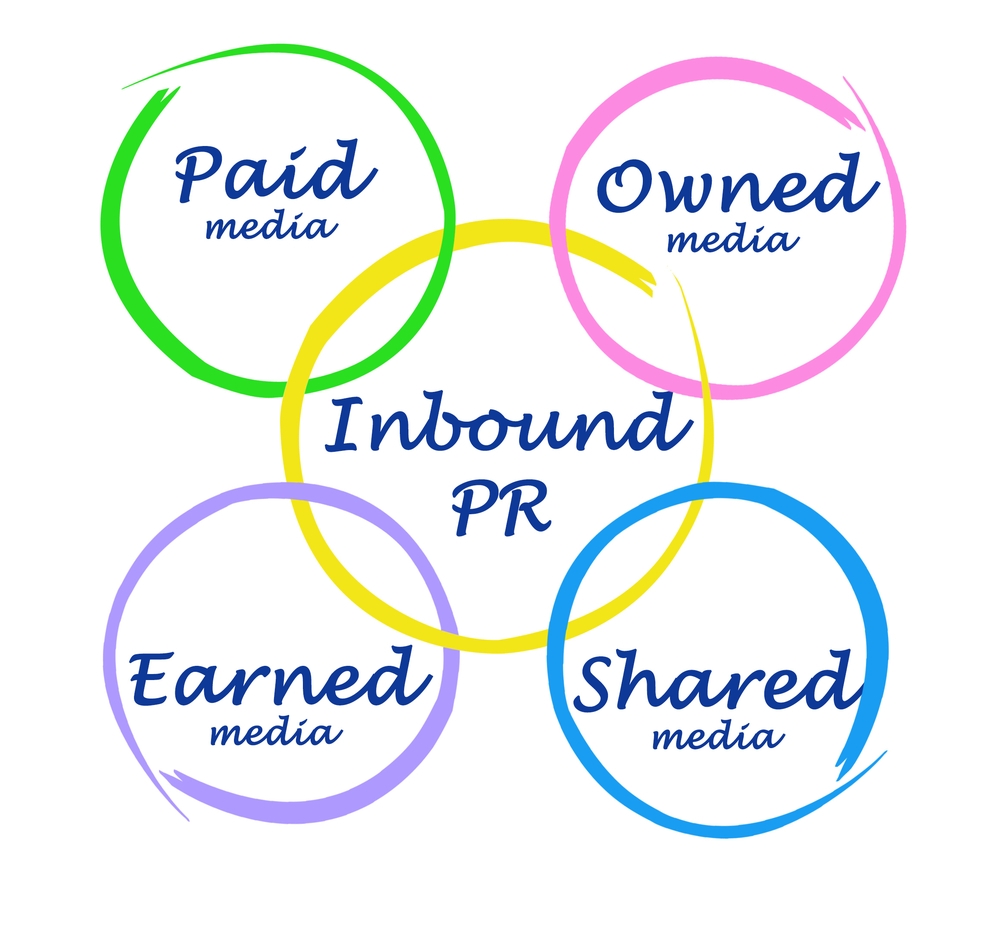Table of Contents
Let’s start by explaining what Inbound PR is before we get into the details of what are the 4 key things that will help make your Inbound PR campaign successful.
We already know that PR is a public relations or creating a good image for an organization or product. Traditional PR involves contacting the media, creating advertising media, updating news and information about the company and its products to publicize to outsiders or customers and make them become customers of the organization. However, in this era where digital systems play an important role in the daily lives of the new generation, news and information changes rapidly. Contacting for information is also fast. From the perspective of PR itself, it must change its image from the old way to use the internet or use digital systems more so that businesses or organizations can compete in the present era.
Inbound PR is a new form of public relations. From the old way of trying to push press releases to the media to deliver the news to customers, it will change to attract target customers to the organization or product from knowledge media, articles, websites, videos, social media, and others in order to make our organization or product the first thing in the minds of the customer group until the customer decides to buy our products or services.
Now, when we receive a project or campaign from a client, they often wonder how we will work, where to start, how to plan to make the campaign they have been assigned a success. The question we often get asked is, “How do you plan to work on this campaign?” This is a very reasonable question, because at the end of the day, whether it is our existing client or a client we are presenting work to, the client wants to be assured that we will deliver on the promise of the service proposal.
A good PR consultant can help you get the right media coverage, and the market is full of tech PR companies (and some lesser ones too). The question is, what can these PRs offer? What do you need to consider when building a quality PR and running a successful campaign? Find out below.

The Four Key Elements of Inbound PR Campaigns
Understanding your audience or target group
The number one rule of PR, or should be considered a discipline, is crucial to a successful Inbound PR campaign, and that is, you must know your audience or target group, and you must be able to communicate with them effectively. Or as the Chinese proverb says, know yourself and others, and you will win a hundred battles out of a hundred. But how many businesses really know their target group?
Sure, it’s easy to find a brief history of a particular buyer or customer profile, but how deep do we need to go into the customer data to truly understand our target audience?
The best way to understand your target audience or your customers is to conduct research on them – their preferences, behaviors, habits, etc. – and then conduct surveys. You can start by surveying your frontline employees, in other words, the people who interact with your customers or prospects on a regular basis – your sales or customer service team – but you will only gain a limited amount of information from this method. On the other hand, if you invest in extensive external research, you will be able to truly understand their needs, motivations and what drives them to buy your product, recommendation or service.
The keys to understanding your target audience are: one, the purpose of your business; two, who are the people you want to communicate to; and three, what do you want to communicate or reach? Once you understand and have the answers to these three questions, you will be able to create campaigns that reach your target audience more effectively.
Understand the content of your article
There is an idiom that says, “Don’t throw out the baby with the bathwater,” which literally means that if the bathwater is dirty, throw it out, but don’t throw out the baby with the bathwater. And the idiom, “Don’t reinvent the wheel,” means that you don’t waste your time inventing something that has already been invented. You will understand these two idioms better when we talk about the content of your articles. When you feel that your target audience for your articles is not growing or not in the numbers that you would like or not getting the attention that you expected, you may think or you may be advised to throw out your old work and start over from the beginning. And that is throwing away all the time and effort that you have invested in reaching your target audience in new ways.
A better way than throwing away all your old work is to better understand how to use your existing content and where you need to create new content for the future. Start by reviewing all of your existing content and planning it to get your articles in front of your target audience. Once you understand your audience, identify your existing content and how it will engage your target audience. This can be done through one of three steps – awareness, consideration and decision.
This isn’t just about writing blogs, case studies and e-books that can be downloaded from your website. We’re talking about product reports, price lists, webinars, industry research you conducted to gauge the market or that idea you thought of at 2 a.m. and began sketching on your way into the office.
A good article is the heart of your business website. A good article content should have the following key elements: who, what, when, where and why. These are the essential components of your article that will make people interested in reading and learning. A successful Inbound PR professional will be good at creating articles that cover all aspects of the topic to attract the attention of relevant media outlets and increase the chances of your article being featured in various media outlets.
Once you have a complete content audit, you will be able to see where your content is hurting, and for what kind of buyer personas. This is where a successful Inbound PR strategy comes into play.

Understand your website
How well is your website performing? Which pages are most popular? How many times are your blogs visited? What is your keyword strategy? What is your visitor engagement rate? Considering all of these things, it may seem like we have skipped over PR to marketing and SEO, but any Inbound PR presentation must always take these elements into account. If you don’t understand your website, it will not be able to grow your market and sales.
You’ll want to make sure you know your best performing website pages and make sure you have the right calls-to-actions (CTAs) in place so your audience can engage with your company.
How does this relate to a PR campaign? Think of it this way. You’ve already spent a lot of money on public relations to create awareness of your business and your offerings. A PR consultant has done a great job of covering interviews and vetting to make sure your audience knows why you’re different (and better) than your competitors. That’s a great thing to do when those prospects go to your website to find out more and they find that the only way they can interact with you is through the “Contact Us” button. And that’s when your website engagement rates drop.
Your website should be filled with content that educates your target customers, gives examples of how you can solve their business problems, and motivates and explains why they should use your product over someone else’s.
If you don’t take the time to understand your website, then whatever PR campaign you run will not succeed or fail because you will not be able to see the impact beyond the media.
Understand how to measure success
Working and delivering a good campaign should be able to measure the success of the work. Then it can be called good.
You may be regularly getting articles published online, but do you know how many links those articles have back to your website, your products, or your landing pages? We’re not talking about follow or no-follow links here. While follow links are great for SEO, the key to Inbound PR is generating more traffic and therefore more business opportunities for you.

Understanding where the traffic coming to your website is coming from is a good measure of its impact, and it’s even better if you have a dedicated page on your website for your PR campaigns, as you can then see the clear impact of your Inbound PR campaigns.
Remember that tracking and measuring your website is the key to success. Clear reports will help you know how many visitors (both new and returning) your website is getting. Measuring success is an important part of it.
Concept Measuring the success of Inbound PR will help you better understand each campaign, making your PR and marketing efforts more effective, which will help your business achieve its goals.
Running a successful Inbound PR campaign is not easy. It is a highly competitive industry, but competition is good. We can use analytics tools and software that can be integrated with CRM and CMS to help us see the real ROI. And this is an interesting story about Inbound Marketing that we have presented for you to follow. We have more stories related to Inbound Marketing to present in the next episode. Don’t miss it. Follow us.



